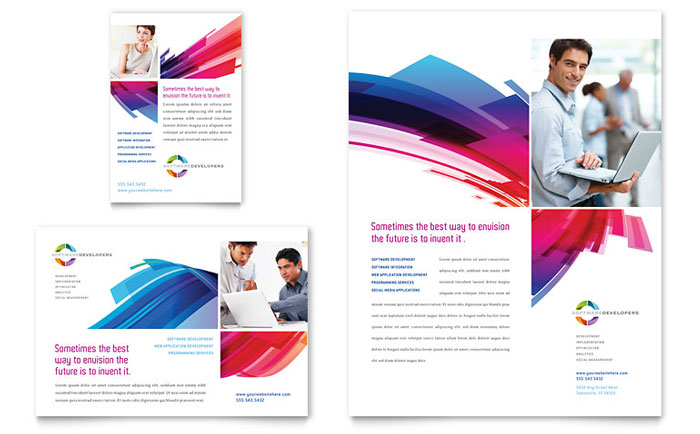
So you've decided to start your own digital marketing strategy. What's next? This article will guide you through each step of the process from selecting your channel to researching your audience. This article will also show you how to create a customer journey and split test your strategy. Once you have this information, your brand will know if it is working. If not, you're not alone. There are many businesses that have faced the same question.
Researching your audience
You must research your audience before you can create a digital advertising strategy. This can be done through quantitative research. This involves surveying large populations and producing statistical results. For example, if you want to create an email campaign for a specific audience, you need to identify their interests and pain points. Similar to their purchase history, you can use this information to determine their buying behavior. Then, you can target your marketing message to the specific audience segments.
A successful digital marketing strategy requires you to get to know your audience. Without thorough research, it's impossible to understand your audience's needs and wants. Research can help identify those needs and tailor content to them. Research will also help you predict their needs so that your marketing is more effective. Here are some ways to research your audience.
Interviews: To understand your audience better, you can conduct surveys. Surveys: You can email existing customers and publish customer reviews via social media. Interviews are also possible. These surveys can give you valuable insight into your audience's motivations. You can then create your digital marketing strategy. It's important to research your audience, but it is equally essential to create a compelling campaign. This will enable you to reach your audience and increase sales.
Segmentation is a way to understand your audience's interests, preferences, and lifestyle so that you can tailor your messaging to them. Segmentation is a powerful tool to create stronger messages and connect with customers in a more personal manner. Adidas sent a separate email for women while the clothing label categorised their audience by gender. Customers tend to buy jeans, and so a survey asking them for their opinions on the retailer would return an average score 8/10.
Choose the right channels
It is essential to choose the right digital marketing channels for your product or services promotion. The primary goals, competition, budget, and other factors should guide your choice. Different channels have different results, so choose wisely and decide what works best for you. You will need to choose which channels you use to determine the types of content you want and how your ads are formatted. Content marketing is still the king and most relevant form of marketing. But if you want reach your audience, you need to use this technology.

The business goals will affect the choice of digital marketing channels. Your short-term, and long-term goals are important. One long-term goal is to increase revenue 20 percent over the next two year. Another short-term goal is to generate 400 qualified leads in six months and increase website traffic by 70% within eight months. Make sure to identify the short-term and long-term goals of your business so that you can determine which channels will work best for you.
Before you decide which channels to use, make sure to analyze the effectiveness of each of them. Each channel comes with its own strengths, weaknesses and freedoms. Consider the cost of each channel's creative content and what type you will need. Be sure to allocate all the budget you have before you consider using other channels for your digital marketing strategy. You should use Twitter or Facebook to generate buzz.
Create a customer journey
A customer journey plan is one of the key elements to a successful digital marketing campaign. These maps are a visual representation of the customer journey, from making a decision to take action. The customer journey maps can be used to show customers the entire customer journey, from the first stage of a sales funnel to when they become loyal customers. The customer journey map can also help identify where improvements can be made.
A customer journey map is essentially a prospect's journey to purchase. It assists marketers in mapping out the questions and pain points that they encounter as they go. The higher-funnel stage is aimed at increasing awareness and interest. While the last stage is aimed to foster brand loyalty, This starts with awareness. It can be created through social media and word of mouth.
After researching and learning about a brand, potential customers begin the information-gathering phase of the customer journey. They aren't sure who you are at first but they know what their needs are. In this stage of the Customer Journey, brands should have content that aids customers to make informed decisions. Brands can also offer customers a free trial period to remove any obstacles that may hinder their purchase process.
A customer journey map will help marketers target their advertising efforts by understanding the steps customers take to buy a product or service. Each stage should have its own buyer persona. Identifying each stage's goals will help marketers adjust their marketing campaigns accordingly. A customer journey map is a tool that marketers can use to better understand their target audience. It identifies what motivates each customer's decisionmaking stage.
Split testing your strategy
Split testing can increase your business' profitability. It can be used in multiple areas of your digital marketing strategy. You can test headlines and page copy as well as button text, image, social media buttons, email marketing, and calls to action. Here are some examples of scenarios you can test. Split testing is useful for determining which marketing tactics will increase sales and profitability. Use the right sample size. Split testing should be done regularly and should be conducted with an appropriate confidence rating.
Split testing can help you determine if certain marketing strategies are working or not, and where to make changes to maximize their effectiveness. Split testing also allows you to see if your online advertising strategy is generating leads, and whether it is bringing in return. Split testing involves experimenting with different versions of a website, or individual elements of it. Split testing allows you to see if the website is earning money. Once you have identified which variations generate more leads you can make changes in your digital advertising strategy.

To get ideas for split tests, use the ClickFunnels ad library, which allows you to test 6 different versions of one advertisement. Facebook is another great place to find split test ideas. You can find many examples of Facebook ads and copy them to see which ones perform better. Split testing is also possible on landing pages. For example, moving your CTA below the fold increased conversions by 304%, while removing it from the landing page caused cart abandonment rates to decrease by 33%.
Split testing is an essential component of conversion optimization. It involves dividing traffic into two groups - the control group and the variant. Split testing involves splitting traffic so that 50% of the traffic is shown the control variation, and the rest the variant. Multivariate testing involves dividing traffic into equal segments. Each segment is then shown one variant of the variant. Split testing is a great way to improve your digital marketing strategy.
Measuring the success
The first step to establishing a digital marketing strategy that works is measuring its success. You have many options to measure the effectiveness of your digital marketing strategy, such as determining how many visitors convert into buyers. Another way to measure effectiveness of a campaign is by using other metrics, such as how many pages were viewed. These metrics can be used to determine the success of a campaign based on its target audience, as well as to determine the effectiveness of a specific marketing initiative.
You need to measure the success or failure of your digital marketing strategy by tracking key performance indicators. KPIs are quantifiable metrics that track how your marketing team performs against a specific goal or objective. These targets can be high-level or low-level. These KPIs provide an indicator of the success of a campaign and can be used to guide future campaigns.
It is essential to establish clear goals for measuring your digital advertising strategy. How many people visited your website? Do you encourage purchases? Are your email marketing campaigns generating more business? Are you getting new business? How many people opened an email and made a purchase? These are just a few examples of what you need to track to determine whether your digital marketing strategy is working. It will ultimately all come down to your goals and objectives as well your digital marketing strategy.
FAQ
What is an SEO Campaign?
An SEO campaign is a series of activities designed to improve the visibility of a particular webpage or domain name in search engines like Google, Bing, Yahoo, and others. These activities include optimizing page titles, meta description tags and URL structure.
Keyword research is a key part of SEO campaigns. This involves identifying keywords that are likely to increase organic traffic. Once keywords have been found, they need to be optimized for the entire site, from the homepage through individual pages.
SEO is still relevant: Does link building still matter?
Link building will always remain essential. But how you approach it today is different than how others did it 10 or 20 years ago. Today's biggest challenge for businesses is how to find customers and sell. Search engine optimization is where you come in.
Social media has become a key tool for businesses. Content marketing strategies have also become very important. Google penalizes websites which have too many links to their sites. This is understandable since linking to too many other sites will likely mean that there isn't much original content on your site.
These factors all mean that link building is no longer as important for ranking your website.
What are the best tools for on-page optimization?
Video embeds as well as image alt tags, structured markup and internal linking are some of the best tools to use for on-page search engine optimization. You can learn more about these types of issues in this article.
How often does SEO need be done?
It doesn't matter how well you keep your links maintained. You don’t have to do regular SEO campaigns. You could lose business if your links aren't maintained and you rely only on organic traffic.
Small businesses should consider monthly updates to their SEO. For larger companies, quarterly SEO updates may be necessary.
How much does it cost to rank high on search results?
Costs for search engine optimization vary depending on the type of project. Some projects only require minor changes to an existing website while others will require a complete redesign. Monthly fees are charged for keyword research as well as maintenance.
Statistics
- And 90%+ of these backlinks cite a specific stat from my post: (backlinko.com)
- Sean isn't alone… Blogger James Pearson recently axed hundreds of blog posts from his site… and his organic traffic increased by 30%: (backlinko.com)
- : You might have read about the time that I used The Content Relaunch to boost my organic traffic by 260.7%: (backlinko.com)
- If two people in 10 clicks go to your site as a result, that is a 20% CTR. (semrush.com)
- Which led to a 70.43% boost in search engine traffic compared to the old version of the post: (backlinko.com)
External Links
How To
How do I know when I'm doing good SEO?
There are many indicators that will help you determine if you're doing great in SEO.
-
Your bounce rate should be less than 30% - users leave your page without clicking on anything else. If your bounce rate is high, it means that your audience is not trusting your brand and/or isn't interested what you have to offer.
-
Visitors will visit different pages on your site. This is a sign that they are engaging with your site.
-
Your conversion rates are improving. Your audience is aware of your product and wants it to be bought.
-
Your site's average time is increasing. This means that people spend more time looking at your content.
-
More people are coming from searches - this is one of the most reliable signs that you're doing great SEO.
-
This means that you are getting more social media shares - it shows that others are sharing your content and reaching new audiences beyond your own followers.
-
You get more comments on forums, which shows that people are responding positively to your work.
-
Your website will get more engagement - you'll see more likes. Tweets. Shares. Likes.
-
Your rank in SERPs keeps increasing, a sign your hard work is paying off.
-
You're receiving more leads from your website - this shows that people have found your website organically and are now contacting you.
-
Your sales are growing. This means that people who come to your website looking for products and services are now purchasing them.
-
Your blog post gets more views/comments, showing that people find your content interesting and helpful.
-
Your email list will have more subscribers - this means that people trust your business enough to subscribe to your updates.
-
Sales are on the rise - This means people love your products enough to be willing to spend more.
-
Your social media followers are higher, which indicates that your fans are more likely to share your content or engage with you.
-
You are receiving more PR mentions, which means journalists are talking about you online. This raises awareness of your company and helps to improve your reputation.
-
You are being recommended more often, which means that other companies recommend your brand.
-
People continue to return to your website. This is a sign that your customers are satisfied with your work, and will return again and again when they need your assistance.
-
Your competitors are losing market share - this means they didn’t invest as much in their SEO campaigns.
-
Your brand image is changing. This indicates that your brand popularity is growing among a new customer base.